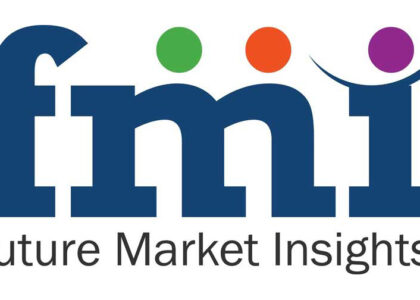The returnable glass bottle market is poised for steady growth, with an expected Compound Annual Growth Rate (CAGR) of 3% throughout the forecast period. By 2032, the market is projected to achieve a market size of US$ 25 billion, up from US$ 18 billion in 2021. This growth trajectory is driven by the industry’s concerted efforts to find eco-friendly solutions that reduce the environmental footprint of beverage packaging.
The returnable glass bottle market is a vital segment within the packaging industry, characterized by the use of glass bottles that can be reused multiple times, thereby reducing waste and environmental impact.
Request Sample Copy of the Report: https://www.futuremarketinsights.com/reports/sample/rep-gb-10047
Here’s an overview of the returnable glass bottle market:
- Market Definition:
- Returnable glass bottles are containers made from glass that are designed to be used, collected, and returned to the manufacturer or distributor for cleaning and refilling.
- These bottles are a sustainable packaging solution, as they help minimize single-use packaging waste.
- Applications:
- Beverage Industry: Returnable glass bottles are prominently used for packaging various beverages, including beer, soft drinks, juices, and water.
- Alcoholic Beverages: They are especially common in the beer industry, where they are preferred for their ability to maintain product quality and taste.
- Non-Alcoholic Beverages: Soft drinks and mineral water are also frequently packed in returnable glass bottles.
- Environmental Benefits:
- Reduced Waste: Returnable glass bottles significantly reduce the amount of single-use packaging waste, which is a crucial environmental concern.
- Energy Savings: The recycling and refilling of glass bottles require less energy compared to producing new glass containers.
- Market Trends:
- Premium Packaging: Returnable glass bottles are favored for premium products, emphasizing quality and sustainability.
- Customization: Brands often use unique bottle designs and labeling to stand out in the market.
- Eco-Friendly Messaging: Companies highlight the environmental benefits of returnable glass bottles in their marketing.
- Market Drivers:
- Environmental Consciousness: Growing consumer awareness and concern for the environment drive demand for sustainable packaging.
- Regulatory Support: Supportive regulations and policies promoting recycling and reusable packaging.
- Brand Image: Companies use returnable glass bottles to enhance their eco-friendly brand image.
- Market Challenges:
- Logistics and Handling: Managing the logistics of returnable bottle systems can be complex and costly.
- Initial Investment: Setting up returnable bottle systems may require substantial upfront investment.
- Global Reach:
- The returnable glass bottle market serves a global customer base, with manufacturers and beverage companies operating in various regions.
- Market Outlook:
- The returnable glass bottle market is expected to continue growing as sustainability becomes a central focus for consumers and businesses.
- Innovations in bottle design, labeling, and logistics solutions will shape the market’s future.
Request Report Methodology: https://www.futuremarketinsights.com/request-report-methodology/rep-gb-10047
Key Players:
Linx Printing technologies
Domino Printing Sciences
Videojet
Markem Imaje
Segments covered:
Color
Application
Region
Regional Analysis:
- North America:
- Market Overview: North America boasts a well-established returnable glass bottle market, with a strong presence in the beer and craft beverage industries.
- Key Trends: Growing popularity of craft beer, eco-conscious consumer preferences, and a thriving local brewery scene.
- Market Drivers: Environmental awareness, regulatory support for recycling, and the preference for sustainable packaging.
- Key Players: Established breweries, beverage companies, and distributors with returnable bottle systems.
- Europe:
- Market Overview: Europe’s returnable glass bottle market is characterized by a long history of bottle return systems, especially in beer and mineral water industries.
- Key Trends: Expansion into non-alcoholic beverages, premium packaging, and a focus on circular economy principles.
- Market Drivers: Stringent recycling regulations, cultural acceptance of returnable bottles, and sustainability initiatives.
- Key Players: Traditional breweries, beverage producers, and recycling companies.
- Asia-Pacific:
- Market Overview: Asia-Pacific is a rapidly growing returnable glass bottle market, driven by increasing consumption of beverages, including beer and soft drinks.
- Key Trends: Adoption of returnable bottle systems by multinational beverage companies, premiumization of products, and eco-friendly branding.
- Market Drivers: Urbanization, a rising middle-class population, and environmental awareness.
- Key Players: Local and international beverage manufacturers, including global beer brands.
- Latin America:
- Market Overview: Latin America’s returnable glass bottle market is influenced by the beer and soft drink industries, with a focus on cost-effective packaging solutions.
- Key Trends: Expansion of returnable systems into emerging markets, affordability of returnable packaging, and sustainable practices.
- Market Drivers: Economic development, consumer preference for familiar packaging, and recycling efforts.
- Key Players: Regional breweries, beverage companies, and bottling plants.
- Middle East and Africa:
- Market Overview: The returnable glass bottle market in this region is driven by beverage industries, particularly in the beer and carbonated soft drink sectors.
- Key Trends: Growth in the beverage sector, expansion of returnable systems, and focus on product quality.
- Market Drivers: Economic growth, increasing consumer demand for beverages, and sustainability initiatives.
- Key Players: Regional and multinational beverage producers, bottling facilities, and distributors.
Ask an Analyst: https://www.futuremarketinsights.com/ask-the-analyst/rep-gb-10047
About Future Market Insights (FMI)
Future Market Insights, Inc. (ESOMAR certified, recipient of the Stevie Award, and a member of the Greater New York Chamber of Commerce) offers profound insights into the driving factors that are boosting demand in the market. FMI stands as the leading global provider of market intelligence, advisory services, consulting, and events for the Packaging, Food and Beverage, Consumer Technology, Healthcare, Industrial, and Chemicals markets. With a vast team of over 5000 analysts worldwide, FMI provides global, regional, and local expertise on diverse domains and industry trends across more than 110 countries.
Contact Us:
Future Market Insights Inc.
Christiana Corporate, 200 Continental Drive,
Suite 401, Newark, Delaware – 19713, USA
T: +1-845-579-5705
For Sales Enquiries: sales@futuremarketinsights.com
Website: https://www.futuremarketinsights.com
LinkedIn| Twitter| Blogs | YouTube

